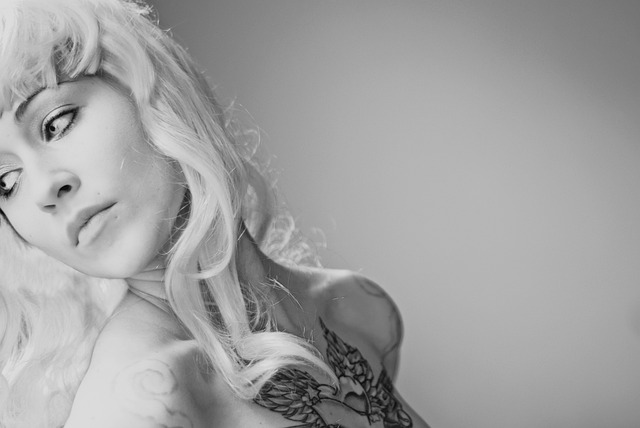
The Valknut symbol holds great historical significance and has intrigued scholars and enthusiasts for centuries. Derived from the Old Norse language, “valknut” can be translated as “knot of the slain warriors” or “knot of the fallen. ” This enigmatic symbol consists of three interlocking triangles, forming a complex and mesmerizing pattern. It is believed to have originated from the ancient Norse culture and is often associated with the mythology and religious beliefs of the Vikings.
The Valknut symbol is commonly associated with the Norse god Odin, who was revered as the god of war, wisdom, and death. Odin was known for his association with fallen warriors and his ability to guide the souls of the brave fallen to the afterlife in Valhalla, the great hall of the slain. The Valknut symbol, therefore, represents the interconnectedness between Odin, the fallen warriors, and the afterlife. While the exact meaning of the Valknut symbol remains a subject of debate among scholars, it is widely interpreted as a symbol of honor, sacrifice, and the warrior spirit. It is often found engraved on various Viking artifacts, including rune stones, weapons, and burial stones, indicating its deep cultural and religious significance. The historical context in which the Valknut symbol emerged further enhances its importance. The Vikings, fierce seafarers and warriors, roamed the seas and explored new lands during the Viking Age, which spanned from the late 8th century to the 11th century.
The symbol’s prevalence during this period suggests its association with battles, bravery, and the inevitable cycle of life and death. The Valknut symbol’s intricate design and its association with Odin have made it a popular choice for tattoos and other forms of artwork in contemporary culture. People often seek the symbol as a means of connecting with their Norse heritage, embracing the warrior spirit, or expressing a fascination with Viking mythology. The Valknut tattoo, with its powerful symbolism and striking appearance, serves as a constant reminder of the values and virtues associated with the ancient Norse culture. In conclusion, the Valknut symbol is a fascinating and enigmatic emblem that holds deep historical significance. With its ties to Norse mythology, particularly Odin and the fallen warriors, it represents honor, sacrifice, and the interconnectedness between life and death. Whether through ancient artifacts or modern tattoos, the Valknut symbol continues to captivate and inspire individuals, serving as a bridge between the past and the present.

Discover the different interpretations and meanings of the Valknut symbol
The Valknut symbol, also known as the “knot of the slain,” is an intriguing emblem that has captivated individuals for centuries. Derived from Old Norse mythology, this enigmatic symbol has a rich and complex history, encompassing a multitude of interpretations and meanings. In this exploration, we delve into the depths of the Valknut, unveiling its significance and shedding light on its diverse connotations. Rooted in Norse mythology, the Valknut symbol holds strong connections to Odin, the Allfather and ruler of the gods in Norse cosmology.
Its name itself combines two Old Norse words: “valr,” meaning slain warriors, and “knut,” meaning knot. Depicted as a series of three interlocking triangles, the Valknut has become an emblematic representation of Odin’s power, wisdom, and connection to the spiritual realm. One of the most prevalent interpretations of the Valknut is its association with Odin’s role as the chooser of the slain. In Norse mythology, fallen warriors who died valiantly in battle were selected by Odin to join him in the glorious realm of Valhalla. As such, the Valknut is often seen as a symbol of honor, bravery, and the warrior’s path. It serves as a reminder of the fierce Viking warriors and their unyielding determination in the face of adversity. Furthermore, the three interlocking triangles within the Valknut symbolize the interconnectivity of the nine realms in Norse mythology. These realms include Asgard (the realm of the gods), Midgard (the realm of humans), and other realms such as Jotunheim (the realm of the giants) and Helheim (the realm of the dead). The Valknut, with its intricate knotting, embodies the intricate tapestry of these realms and their interwoven destinies. In addition to its associations with war, honor, and cosmic interconnectedness, the Valknut is also linked to shamanism and spirituality. Some interpret the symbol as a representation of the triadic nature of life: birth, life, and death. This interpretation aligns with the idea of Odin as a shamanic deity, capable of traversing different realms and gaining knowledge from the spiritual realm.
Moreover, the Valknut has garnered attention in contemporary times as a symbol of connection with ancestral heritage and cultural identity. It has been embraced by individuals who seek to honor their Norse roots and celebrate the rich mythology and history of the Vikings. As a tattoo design, the Valknut often adorns the bodies of those who resonate with its symbolism and wish to display their affinity for the Viking legacy. The Valknut’s enduring popularity is also evident in modern popular culture, with its presence in various art forms, jewelry, and even video games. Its mystique and allure continue to captivate enthusiasts, scholars, and artists alike, as they explore its multifaceted meanings and interpretations.
In conclusion, the Valknut symbol is a compelling emblem that embodies a multitude of interpretations and meanings. Rooted in Norse mythology, it represents Odin’s connection to the slain warriors, the interconnectivity of the nine realms, and the triadic nature of life. Furthermore, it serves as a symbol of honor, bravery, and cultural identity. Whether as a tattoo or a piece of art, the Valknut continues to fascinate and intrigue, inviting individuals to delve into its enigmatic depths and discover their own personal connection to its profound symbolism.

Understanding the cultural and spiritual implications of getting a Valknut tattoo
In recent years, the popularity of tattoos has soared, with individuals seeking to express their personal beliefs, values, and interests through body art. One design that has gained significant attention is the Valknut tattoo. Derived from Norse mythology, the Valknut holds deep cultural and spiritual significance. In this article, we will delve into the intricate details of the Valknut symbol, exploring its origins, symbolism, and the profound meanings associated with getting a Valknut tattoo. The Valknut, also known as the “knot of the slain” or the “Hrungnir’s heart,” is an ancient Viking symbol comprised of three interlocking triangles.
This distinctive design is often found in Norse artwork, carvings, and runestones, dating back to the Viking Age. The term “Valknut” is derived from two Old Norse words: “valr,” meaning slain warrior, and “knut,” meaning knot. As such, it is closely associated with the idea of heroic death and the warrior’s journey to Valhalla, the great hall of the gods. To truly comprehend the cultural and spiritual implications of getting a Valknut tattoo, one must understand its rich symbolism. Firstly, the interconnectedness of the three triangles represents the intertwined fates of the past, present, and future. It symbolizes the cyclical nature of life and the eternal bond between life, death, and rebirth. This concept aligns with the Viking belief in destiny and the continuous cycle of existence. Additionally, the Valknut is closely associated with Odin, the chief deity of Norse mythology. Odin, known as the Allfather, was the god of war, wisdom, and poetry. He presided over Valhalla and the mighty warriors who fell in battle. The Valknut serves as a symbol of Odin’s presence and protection. By adorning oneself with a Valknut tattoo, individuals seek to invoke Odin’s guidance, strength, and valor in their own lives. Moreover, the Valknut holds spiritual significance, representing the connection between the material and spiritual realms. It serves as a gateway or a bridge between the human and divine realms, emphasizing the belief in the existence of a greater cosmic order.
Those who choose to get a Valknut tattoo often aim to establish a deeper spiritual connection and embrace the wisdom and power of the Norse gods. However, it is essential to approach the decision of getting a Valknut tattoo with utmost respect and understanding. Due to its association with Norse mythology and its use in neo-pagan and Heathen practices, the Valknut has been adopted by certain extremist groups as a symbol of white supremacy. As a result, wearing this tattoo can inadvertently convey unintended messages and may lead to misinterpretation. Therefore, it is crucial for individuals interested in getting a Valknut tattoo to be well-informed and aware of its historical and cultural context. By engaging in thorough research and consulting with knowledgeable tattoo artists, one can ensure that the design is approached and depicted in a respectful and appropriate manner, divorced from any negative connotations. In conclusion, the decision to get a Valknut tattoo encompasses deep cultural and spiritual implications. It represents a connection to Norse mythology, the embracing of destiny, and a profound link to the divine. However, it is crucial to approach the tattoo with awareness, understanding, and respect, ensuring that the symbol is interpreted in its intended context. By doing so, individuals can honor the rich heritage of the Valknut and proudly display a tattoo that symbolizes their reverence for ancient Norse traditions.

Tips for choosing the perfect placement and size for your Valknut tattoo
Tips for Choosing the Perfect Placement and Size for Your Valknut TattooWhen it comes to getting a Valknut tattoo, selecting the right placement and size is crucial to ensure the perfect representation of this mysterious symbol. The Valknut holds deep historical and symbolic significance, often associated with Norse mythology and the power of Odin. To make an informed decision about your Valknut tattoo, consider the following tips that delve into the technical aspects of placement and size. Placement:
- Forearm: The forearm offers an excellent canvas for displaying the Valknut tattoo. Its flat surface provides ample space for intricate details, allowing the symbol to be prominently showcased. Additionally, the forearm is easily visible and offers a versatile location that can be covered or revealed as desired.
- Chest: For a bolder and more striking statement, the chest is an ideal placement for a Valknut tattoo. This area allows for larger designs, accommodating intricate patterns or additional Norse-inspired elements. When placed in the center of the chest, the Valknut symbol becomes the focal point, emphasizing its significance.
- Shoulder/Upper Arm: The shoulder or upper arm provides a balanced and symmetrical placement for the Valknut tattoo. This location can be ideal for individuals seeking a medium-sized tattoo with the option of expanding the design in the future. The rounded shape of the shoulder complements the circular nature of the Valknut symbol.
- Back: If you desire a larger and more elaborate Valknut tattoo, the back offers an expansive canvas. This placement allows for intricate details and the incorporation of surrounding elements such as Norse runes or mythical beasts. The back also offers the advantage of being easily covered if desired.
Size:
- Consider Proportions: When choosing the size of your Valknut tattoo, it’s important to consider the proportions of your body. A tiny Valknut symbol might get lost on a larger frame, while an overly large design may overpower a smaller physique. Opt for a size that enhances your body’s natural contours and complements your overall aesthetic.
- Intricacy of Design: The level of intricacy in the Valknut tattoo design will influence its size. If you prefer a highly detailed representation, a larger size may be necessary to capture the intricacies effectively. On the other hand, a simpler design can be accommodated in a smaller size without losing its impact.
- Placement Considerations: The chosen placement also affects the size of the Valknut tattoo. Certain areas of the body, such as the forearm or back, allow for larger designs due to their spacious nature. However, if you opt for a more discreet location, like the wrist or ankle, a smaller size may be more appropriate to ensure the visibility and clarity of the symbol.
- Longevity and Aging: Keep in mind that tattoos may slightly blur and fade over time due to the natural aging process of the skin. Choosing a slightly larger size initially can help maintain the legibility and visual impact of the Valknut symbol as it ages.
By carefully considering the placement and size of your Valknut tattoo, you can ensure a meaningful and visually appealing representation of this ancient symbol. Remember to consult with a professional tattoo artist who can provide expert advice tailored to your preferences and body characteristics. Embrace the mysterious allure of the Valknut while creating a unique and personal piece of body art that will stand the test of time.







Brilliantly written. I couldn’t take my eyes off the screen.